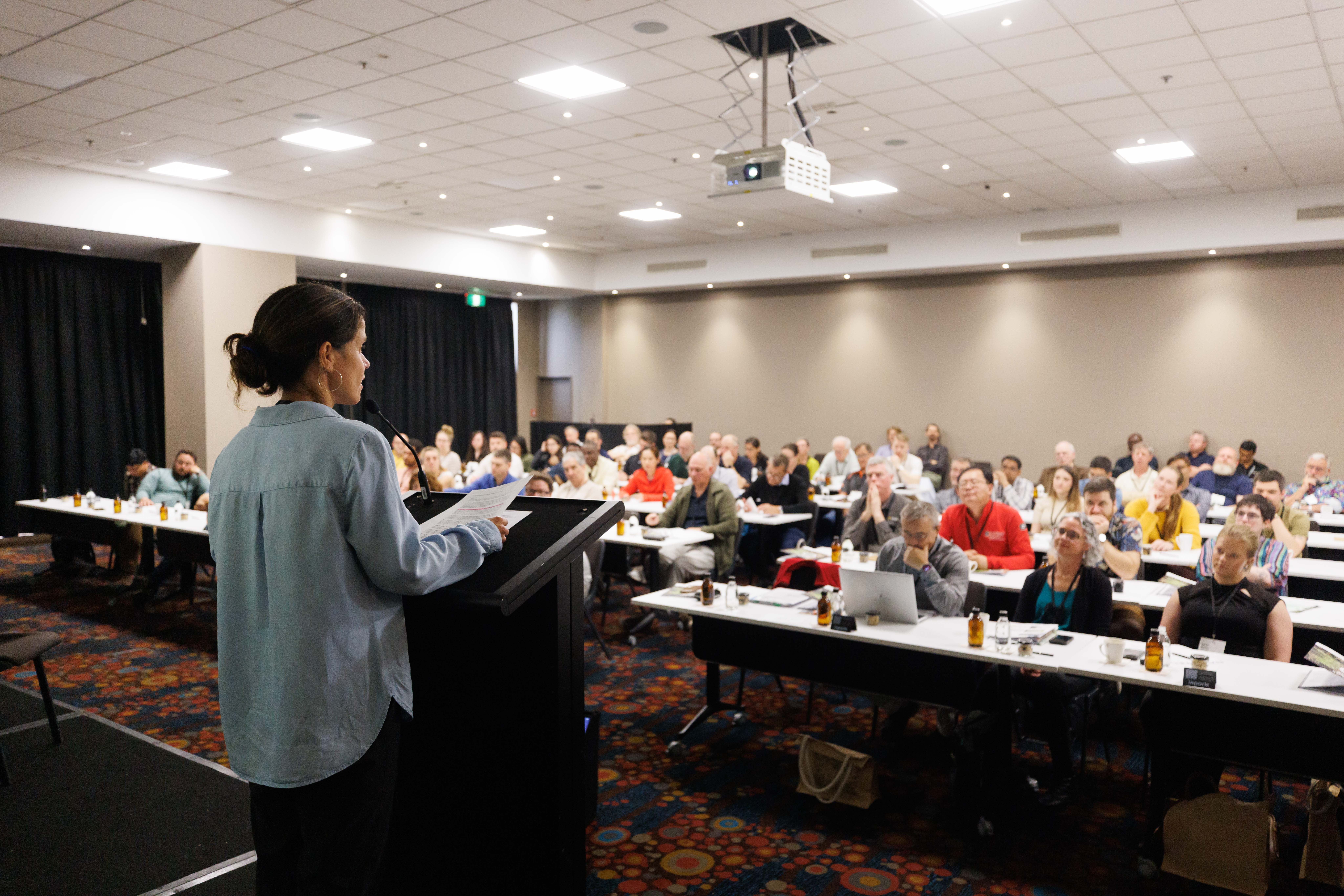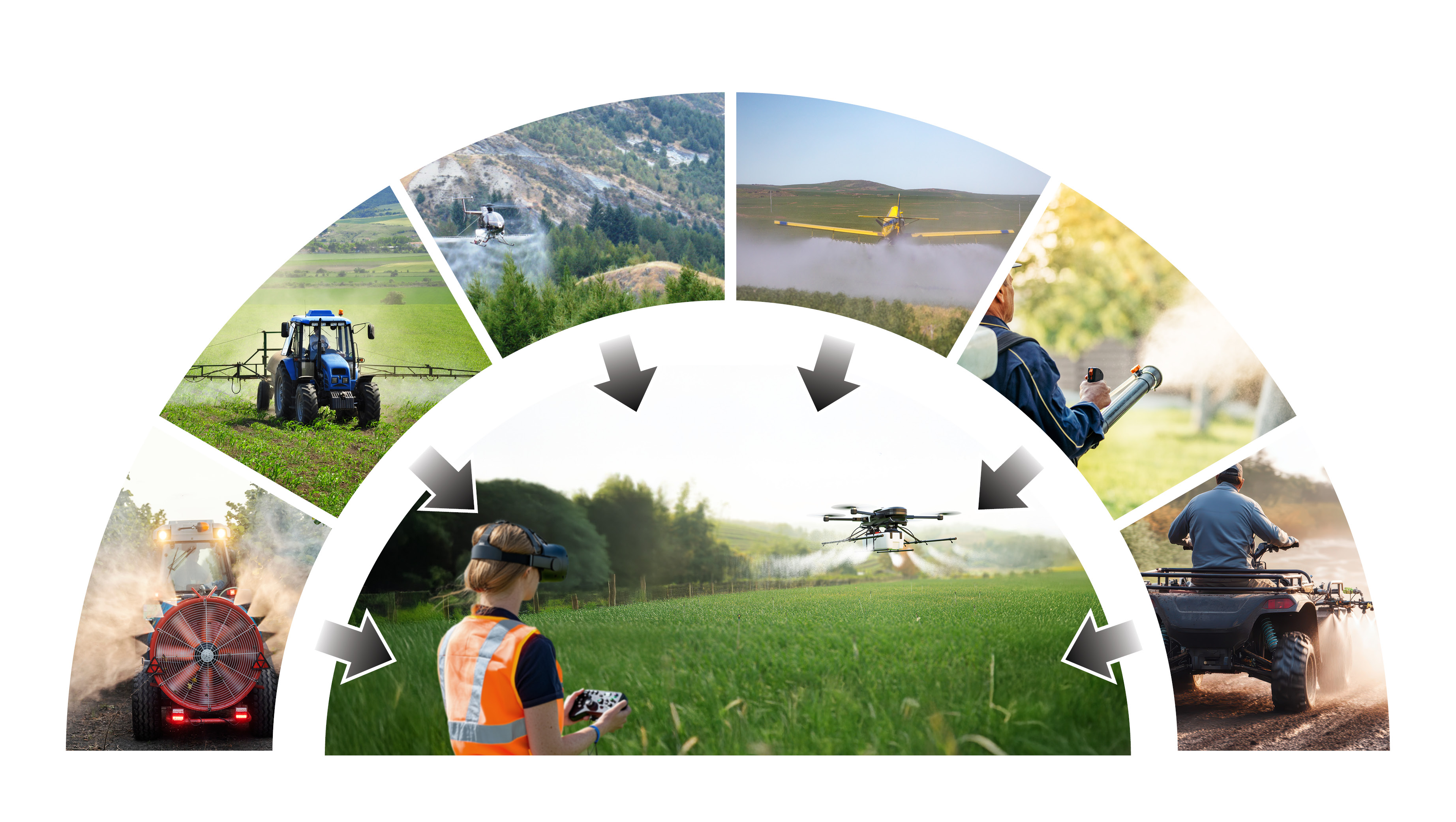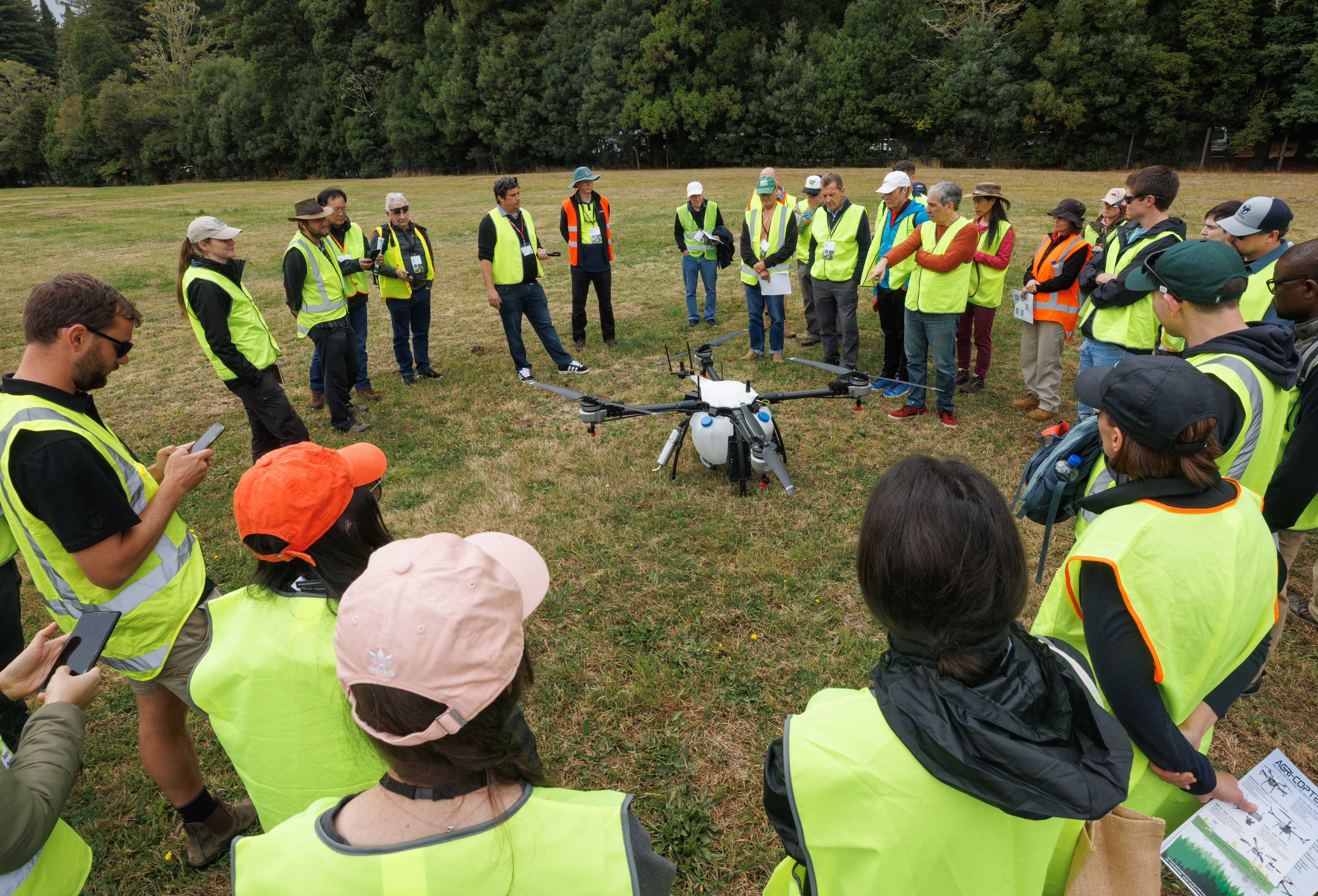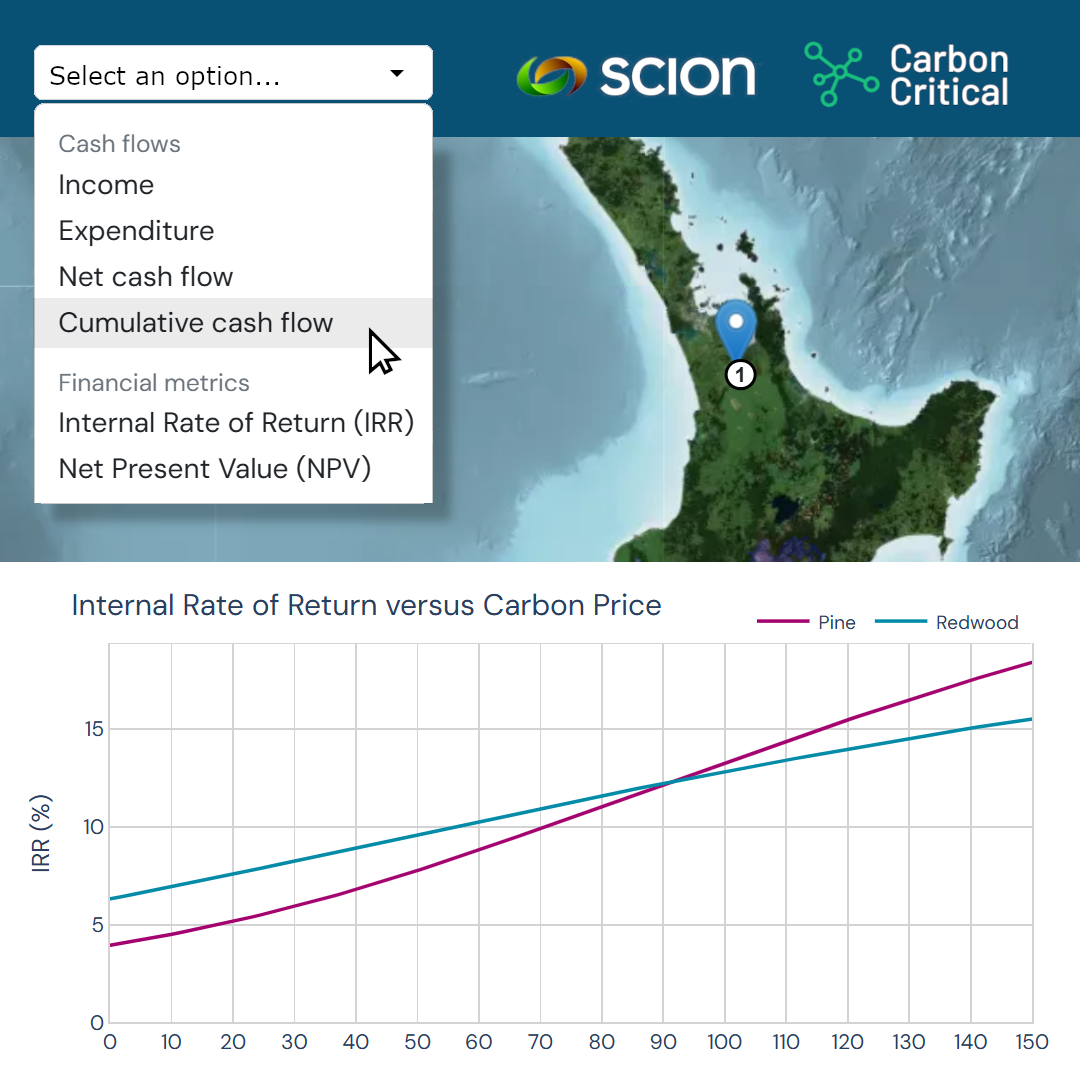What's new at Scion No. 5
Welcome to the Autumn edition of What’s New at Scion.
This issue is brimming with insights and innovative tools that could transform forestry decision making. Inside this issue you'll find:
- A promising opportunity for pesticide application
- New Zealand research showcased at international conference
- Forest Flows: a ‘kitchen sink’ approach
- Powerful interactive tool for multispecies outcomes
- Predicting red needle cast outbreaks
At Scion, we’re open for business and continue our dedication to delivering top-tier science in partnership with you. As the science sector reform moves forward, paving the way for new public research organisations, we’re embracing this transformation as an exciting opportunity to expand our impact for New Zealand and our valued partners.
A few thoughts from me to spark engagement and collaboration:
- Let us know your research needs: Scion is here to support your goals
- Your input is invaluable as we navigate this transition. Please share your thoughts on the science sector changes
- Forestry has a pivotal role in New Zealand’s current and future bioeconomy
- As environmental pressures mount, we’re working with you to develop tools that protect forest health. If you have concerns or ideas, don’t hesitate to connect with our experts below for collaboration opportunities.
Let’s work together to drive innovation and ensure a thriving future for forestry in New Zealand.
Ngā mihi,
Henri Bailleres, General Manager - Forests to Timber Products

Promising opportunity for pesticide application
Uncrewed Aerial Spraying Systems (UASS) present a promising opportunity for precision pesticide application in New Zealand's forestry industry and across other primary sectors. Multi-rotor drones offer several potential advantages over traditional aerial spraying methods, particularly in realising the concept of 'precision spraying'. Key opportunities for UASS in forestry include herbicide spot spraying, treating boundaries near sensitive areas, low-volume fungicide or insecticide applications, and applying variable treatments based on remote sensing data. Future developments, including hybrid UASS that overcome current endurance limitations of battery-powered systems and swarm (multiple UASS) operations, will likely increase their range of potential use-cases.
Potential benefits of UASS include improved maneuverability and accuracy in challenging terrains, more precise spray application potentially reducing overall pesticide use, cost-effectiveness through reduced labor costs and improved efficiency, and minimised environmental impacts such as spray drift. However, to fully realise the potential of UASS in New Zealand forestry, a coordinated research and development programme is needed. Research priorities include optimising UASS use recommendations for specific forestry applications and generating performance data and new spray dispersion models to support development of regulatory processes for UASS.
Read the full article here or talk to Brian Richardson.

New Zealand research showcased at international conference
The IUFRO 1.01.04 Conference was hosted by Scion at the Novotel Rotorua from 17-20 March, bringing together over 85 delegates from more than 10 countries to explore the latest advancements in forest establishment and early growth dynamics. With a packed programme covering topics from biological resilience to precision silviculture, the event proved to be a resounding success.
Topics on the global stage:
- The importance of clear plantation management goals from the outset: laying the foundation for long-term forest success
- The need for new technologies and establishment techniques to address climate change challenges and opportunities
- Unlocking efficiencies and improving productivity through precision across the entire establishment value chain - spanning nurseries, site preparation, planting, and vegetation management to harness the power of many small gains.
- The 'target seedling' concept, matching genetics and plant attributes to site characteristics, as a mechanism to optimise survival and long-term growth
- The critical role of long-term scientific trials and monitoring in evaluating changes to site quality, forest productivity and ecological impacts
- the need for cost-effective methods for establishing planted indigenous forests in New Zealand.
- Maintaining expertise in forest science to build upon the wealth of knowledge we have already created in an increasingly complex and fragmented world.
Looking back to move forward
The conference concluded with a compelling keynote address by Brian Richardson (Scion) and Robert Wagner (Purdue University) who have been members of the IUFRO unit since its inception in 1992. Their presentation reflected on six decades of vegetation management research, distilling key lessons learned and identifying priorities for future studies. We were lucky enough to have four delegates who have been part of this unit since its early years, all providing a wealth of knowledge for others to connect with.
For more on this topic, contact Carol Rolando.

Forest Flows: a ‘kitchen sink’ approach
The Forest Flows research programme has revolutionized our understanding of water dynamics in forested catchments. This five-year initiative, led by Scion senior scientist Dean Meason, utilized cutting-edge technology and amassed over 390 million measurements to debunk long-held myths about forest hydrology.
The findings of the Forest Flows programme offer several key benefits. Firstly, it generated accurate data on tree water use and catchment water storage which is essential for making informed decisions in forestry management.
This data-driven approach ensures that companies can optimize their operations and resource management effectively. Additionally, understanding water movement and quality in forested areas helps inform environmental regulation and policy with real time data. Leveraging these insights positions forestry as leaders in sustainable land management, enhancing market position and appeal to environmentally conscious consumers and investors.
Investing in such research not only addresses critical knowledge gaps but also drives sustainable growth and innovation in the forestry sector.
Read the wrap up story of Forest Flows here.
For more information about the programme, talk to Dean Meason.

Powerful interactive tool for multispecies outcomes
Developed by Scion and Carbon Critical, the Multispecies Dashboard is a powerful interactive web tool that helps forest growers compare long-term outcomes for 11 different tree species commonly planted in Aotearoa New Zealand.
It’s powered by Scion’s advanced tree growth models, making it a valuable resource for landowners and investors. As with all modelling tools, it is intended to provide high-level information to assist decision making and is statistical in nature, representing 'typical' outcomes.
Beyond tree growth and carbon metrics, we've recently updated it to include financial modeling for both redwood and radiata pine, covering harvesting and permanent carbon regimes.
This latest update builds on groundbreaking research from Scion showing that coast redwood can match or even exceed radiata pine in long-term financial returns—while also offering greater resilience to storms, diseases, and pests. With climate change increasing these risks, redwood’s durability makes it an increasingly attractive option.
The upgraded Multispecies Dashboard now allows users to:
- Model future cash flows
- Compute NPV and IRR returns
- Compare different forestry scenarios
- Explore key variables like rotation length, carbon price, and cartage distance
Best of all, it’s free and easy to use—designed for anyone interested in forestry and better land-use decisions.
For more on the research that underpins this tool, talk to Dr Michael Watt.

Predicting red needle cast outbreaks
Red needle cast (RNC) can cause significant defoliation, however, tree crowns can recover in spring and the short- and long-term impacts on tree growth have not been quantified until now. This has also made it impossible to apply a cost-benefit analysis to management of the disease.
Research under the Resilient Forests Programme has helped improve our understanding of RNCs disease cycle. It has a sporadic occurrence and displays seasonal patterns with peaks in winter and spring and very little detection in summer, but the severity of outbreaks varies, often resulting in “boom or bust” years. We have started unravelling seasonal RNC patterns by quantifying how the steps in the disease cycle, such as infection and spread, are driven by weather. The more favourable the weather, the faster this cycle can repeat, resulting in a disease outbreak.
We found the optimal temperatures for RNC are between 10 and 20degC, with cooler temperatures slowing processes. Warm temperatures above 23oegC and dry conditions stop the infection cycle, explaining why little disease is typically seen over summer. We have built this into an infection risk model that indicates at a daily scale how suitable weather is for RNC infection
In some areas control may only be required roughly every six years, however, in other areas more frequent control operations or alternative methods are required. The inability to predict these disease outbreaks makes management decisions on where and when to apply control difficult.
Prediction of boom RNC years may allow preventative spraying before the disease takes hold and defoliation (and growth losses) occur. Scion is working to validate the infection risk model and make it available to foresters to support decision making. The infection risk model may also support longer-term planning, such as the deployment of more resistant genotypes or alternative species.
Get in touch with Stuart Fraser if interested in the tool.
Find our experts at these upcoming events
NZFOA Biosecurity Conference
Talk to our experts at the upcoming FOA biosecurity conference, 10-11 April in Christchurch. Hear all about our forest health and biosecurity research, including aerial eDNA sampling for Better Border Biosecurity (Andrew Cridge), beetle biodiversity monitoring (Carl Wardhaugh), biosecurity along logging truck pathways (Darryl Herron), highlights from the Protecting Aotearoa from wind-dispersed pests programme (Ilze Pretorius) and more.
Innovatek Forest Bioeconomy Conference
We’re proud to sponsor the inaugural Forest Bioeconomy Conference, 21-22 October 2025 in Rotorua. Join global leaders, researchers, and innovators at Bioeconomy Innovations 2025, where the latest advancements in sustainable bioproducts and forest-based materials come to life.
